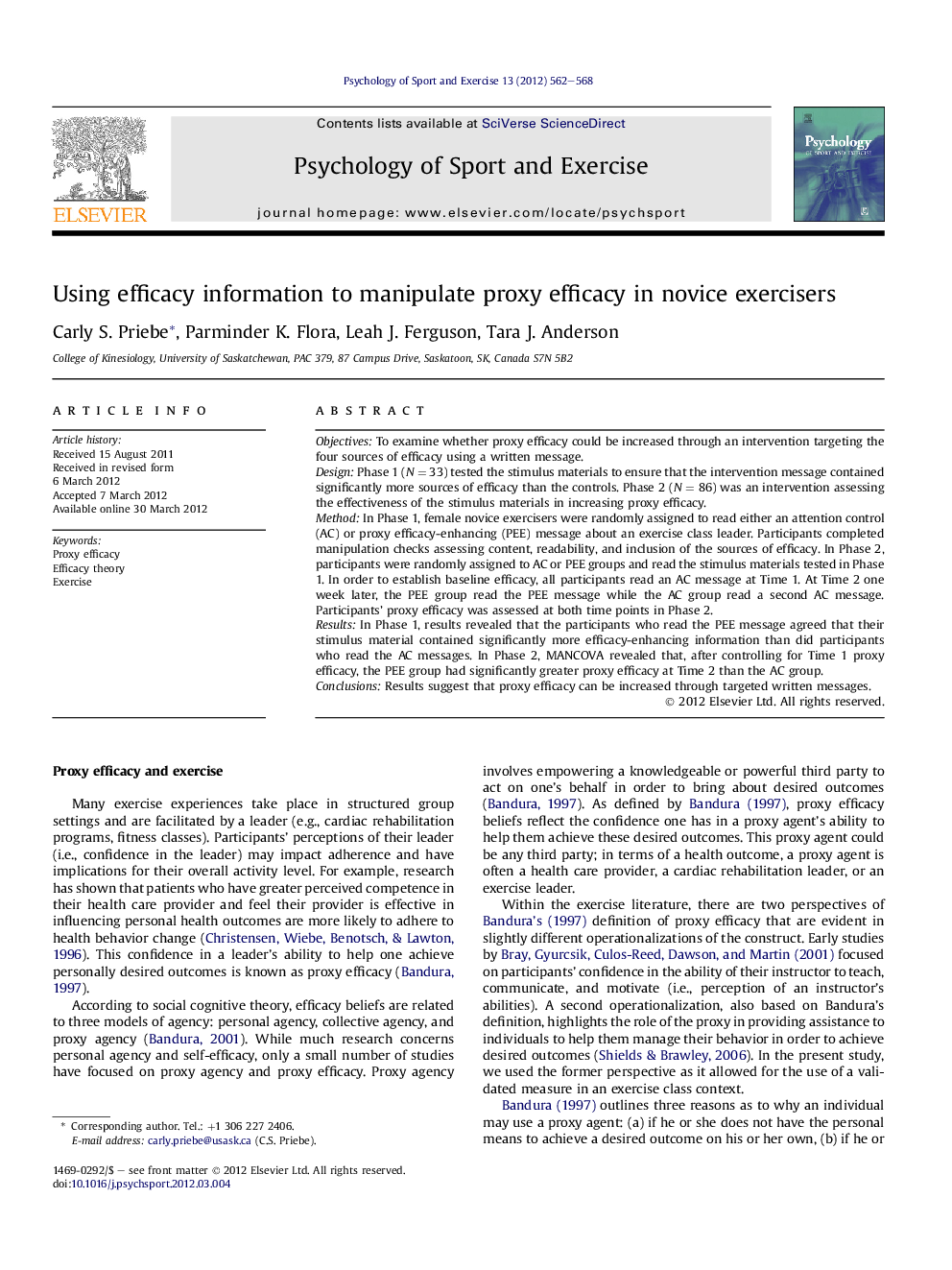| کد مقاله | کد نشریه | سال انتشار | مقاله انگلیسی | نسخه تمام متن |
|---|---|---|---|---|
| 894334 | 1472127 | 2012 | 7 صفحه PDF | دانلود رایگان |

ObjectivesTo examine whether proxy efficacy could be increased through an intervention targeting the four sources of efficacy using a written message.DesignPhase 1 (N = 33) tested the stimulus materials to ensure that the intervention message contained significantly more sources of efficacy than the controls. Phase 2 (N = 86) was an intervention assessing the effectiveness of the stimulus materials in increasing proxy efficacy.MethodIn Phase 1, female novice exercisers were randomly assigned to read either an attention control (AC) or proxy efficacy-enhancing (PEE) message about an exercise class leader. Participants completed manipulation checks assessing content, readability, and inclusion of the sources of efficacy. In Phase 2, participants were randomly assigned to AC or PEE groups and read the stimulus materials tested in Phase 1. In order to establish baseline efficacy, all participants read an AC message at Time 1. At Time 2 one week later, the PEE group read the PEE message while the AC group read a second AC message. Participants' proxy efficacy was assessed at both time points in Phase 2.ResultsIn Phase 1, results revealed that the participants who read the PEE message agreed that their stimulus material contained significantly more efficacy-enhancing information than did participants who read the AC messages. In Phase 2, MANCOVA revealed that, after controlling for Time 1 proxy efficacy, the PEE group had significantly greater proxy efficacy at Time 2 than the AC group.ConclusionsResults suggest that proxy efficacy can be increased through targeted written messages.
► Phase 1 confirmed that the proxy enhancing message included sources of efficacy.
► Phase 2 revealed higher proxy efficacy beliefs in the manipulation group.
► It is possible to increase proxy efficacy through targeted written messages.
Journal: Psychology of Sport and Exercise - Volume 13, Issue 5, September 2012, Pages 562–568